Lean ground beef is a culinary staple that effortlessly blends health benefits with versatility. Whether you’re preparing a hearty chili, crafting gourmet burgers, or meal-prepping for the week, this protein-packed option caters to diverse dietary needs. Let’s dive into its composition, benefits, and creative ways to incorporate it into your meals.
1. What is Lean Ground Beef?
1.1. Definition and Composition
Lean ground beef refers to ground meat with a fat content typically below 10%. This classification ensures a balance between the rich flavors of beef and reduced saturated fat content, making it a healthier choice. It’s sourced from various beef cuts, including sirloin, round, or tenderloin, which contribute to its nutritional value while maintaining the distinct taste of red meat. Ground meat is prized for its ability to provide protein and essential nutrients without the excess fat found in regular ground beef.
1.2. Types of Lean Ground Beef
Lean ground beef is available in several grades based on its fat content, allowing consumers to choose the one that best suits their dietary needs:
- 93% Lean / 7% Fat: A popular option for everyday cooking, this grade strikes a balance between flavor and health-consciousness, making it ideal for recipes like meatballs or stuffed peppers.
- 96% Lean / 4% Fat: For those on ultra-lean diets, this option offers minimal fat while delivering the robust flavor of beef. It works well in dishes where additional moisture can be incorporated, such as soups or stews.
By understanding these classifications, shoppers can make informed decisions, ensuring their meals align with health and flavor goals.
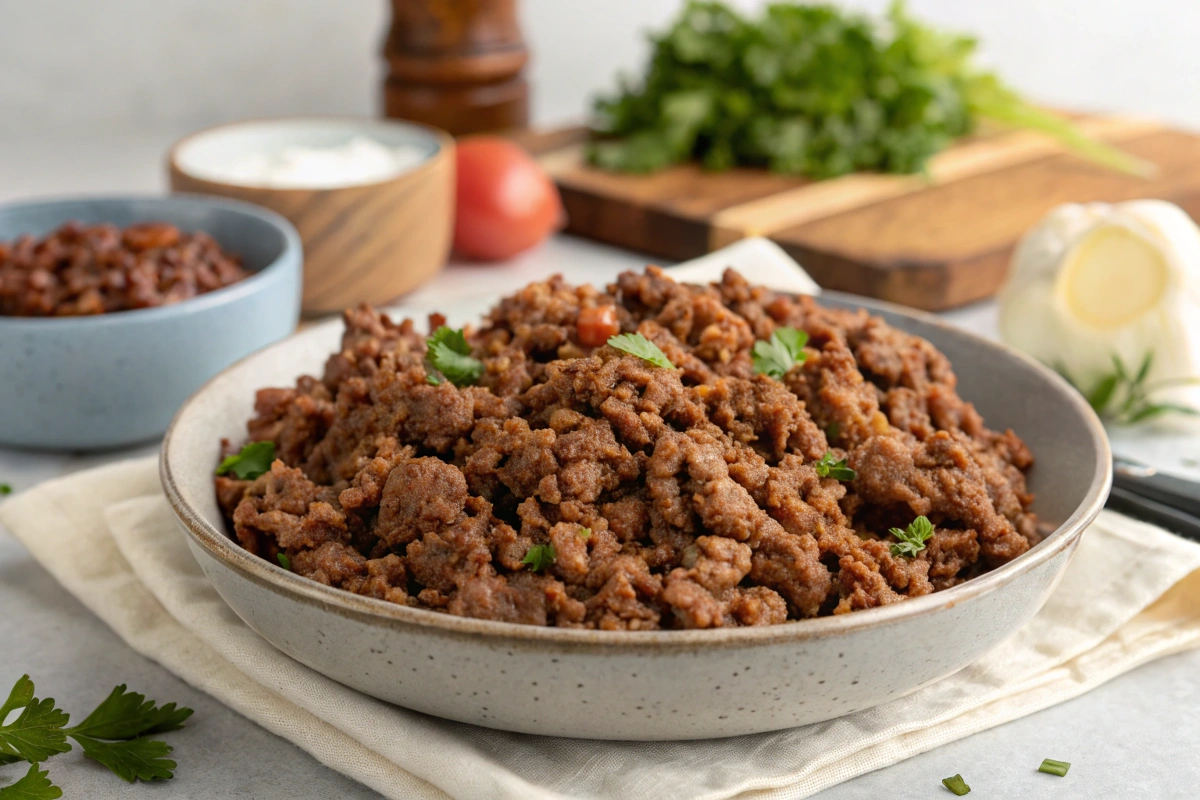
2. Nutritional Profile of Lean Ground Beef
2.1. Calories and Macronutrients
A 3-ounce serving of lean ground beef is a nutritional powerhouse, offering approximately:
- Calories: ~170
- Protein: 22-25g
- Fat: 8g (or less)
This nutrient composition makes lean ground beef an ideal choice for anyone aiming to maintain a high-protein diet while keeping calorie and fat intake in check. The protein in lean ground beef supports muscle repair, hormone production, and overall cellular function, making it a staple for active individuals and those looking to build or maintain lean muscle mass.
2.2. Essential Vitamins and Minerals
In addition to being a protein-rich food, lean ground beef is a valuable source of essential nutrients:
- Iron: Crucial for the production of hemoglobin, iron in lean ground beef helps transport oxygen throughout the body, combating fatigue and supporting energy levels.
- Zinc: Known for its role in boosting immunity and accelerating wound healing, zinc is a key component of a balanced diet.
- Vitamin B12: Vital for nerve function, DNA synthesis, and energy metabolism, this vitamin is abundant in lean ground beef, making it particularly important for individuals following a primarily animal-based diet.
These nutrients collectively make Lean minced meat a comprehensive option for supporting overall health and wellness.
3. Health Benefits of Lean Ground Beef
3.1. Protein Powerhouse for Muscle Growth
The high protein content of lean ground beef makes it a standout choice for athletes and fitness enthusiasts. Protein is essential for repairing muscle tissue after exercise and promoting muscle growth. Incorporating it into meals, such as stir-fries or tacos, provides a convenient and delicious way to meet daily protein requirements.
3.2. Role in Weight Management
Lean ground beef’s balance of protein and low fat contributes to feelings of fullness, reducing the likelihood of overeating. Its inclusion in calorie-controlled diets can support weight loss or maintenance goals without sacrificing flavor or nutritional value.
3.3. Supporting Heart Health
Choosing lean cuts of beef helps moderate saturated fat intake, a factor linked to improved heart health. When combined with a diet rich in vegetables, whole grains, and healthy fats, Lean minced meat becomes part of a heart-healthy eating pattern, offering protein and essential nutrients without the drawbacks of higher-fat alternatives.
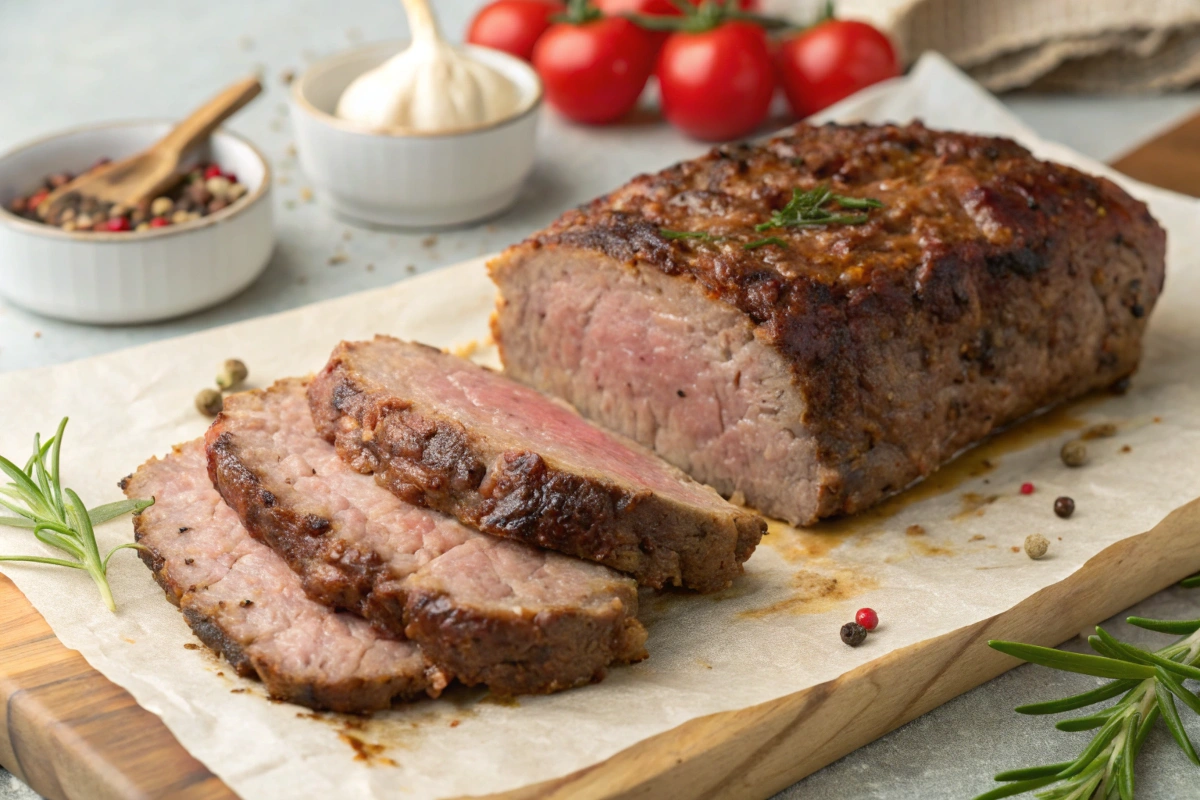
4. Cooking with Lean Ground Beef
4.1. Popular Cooking Techniques
Lean ground beef’s versatility makes it suitable for a range of cooking methods:
- Grilling: Ideal for crafting flavorful yet healthy burger patties or kabobs. Grilling allows excess fat to drip away, leaving you with a lean, savory meal.
- Baking: Perfect for dishes like casseroles, meatloaf, or stuffed bell peppers. Baking helps retain the natural juices of lean ground beef while avoiding the need for added oils.
- Stir-frying: A quick and convenient method for weeknight dinners. Lean ground beef pairs well with colorful vegetables and light sauces to create balanced, nutrient-dense meals.
4.2. Easy and Delicious Recipes
Incorporating ground meatinto your meals doesn’t have to be complicated. Here are a few ideas:
- Lean Beef Tacos: Seasoned with spices like cumin and paprika, lean ground beef creates a flavorful base for tacos. Add fresh toppings like lettuce, tomatoes, and avocado for a nutritious meal.
- Spaghetti Bolognese: Swap regular ground beef for lean ground beef in this classic dish. The result is a lighter yet equally satisfying sauce that pairs beautifully with whole-grain pasta.
- Beef and Veggie Stir-fry: Combine lean ground beef with your favorite vegetables, such as broccoli, bell peppers, and snap peas, for a quick, nutrient-packed meal. A splash of soy sauce or teriyaki adds depth without excessive calories.
These recipes showcase the versatility of lean ground beef, proving that healthy eating can also be flavorful and satisfying.
5. Choosing Quality Lean Ground Beef
5.1. Recognizing Freshness and Quality
Selecting high-quality lean ground beef begins with visual inspection. Look for a vibrant, bright red color, indicating freshness. Packages with excessive liquid or a dull, grayish hue often signal aging or improper handling, which can impact flavor and safety. Additionally, check for a firm texture when gently pressed through the packaging. Fresh lean ground beef should spring back rather than feel mushy.
5.2. Label Reading Tips
Understanding product labels is crucial for ensuring quality. Look for USDA certifications, which guarantee that the beef meets strict federal standards. Labels like “grass-fed” or “organic” signify cattle raised without synthetic hormones or antibiotics and often indicate higher nutritional value and better flavor. Familiarizing yourself with these terms can guide you toward premium selections that align with your dietary preferences.
6. Storing and Handling Lean Ground Beef Safely
6.1. Proper Storage Guidelines
To maintain freshness, lean ground beef should be refrigerated immediately at or below 40°F. Ideally, it should be consumed within 1-2 days of purchase to preserve its quality. If you plan to use it later, proper freezing techniques are essential to prevent spoilage and maintain nutritional integrity.
6.2. Tips for Freezing and Thawing
When freezing Lean minced meat, wrap it in airtight packaging, such as freezer-safe plastic wrap or resealable bags, to prevent freezer burn. Label packages with the date to track storage times, as frozen beef is best used within 3-4 months. For thawing, transfer it to the refrigerator and allow it to defrost overnight. This method ensures safety by keeping the beef at a consistent, cold temperature.
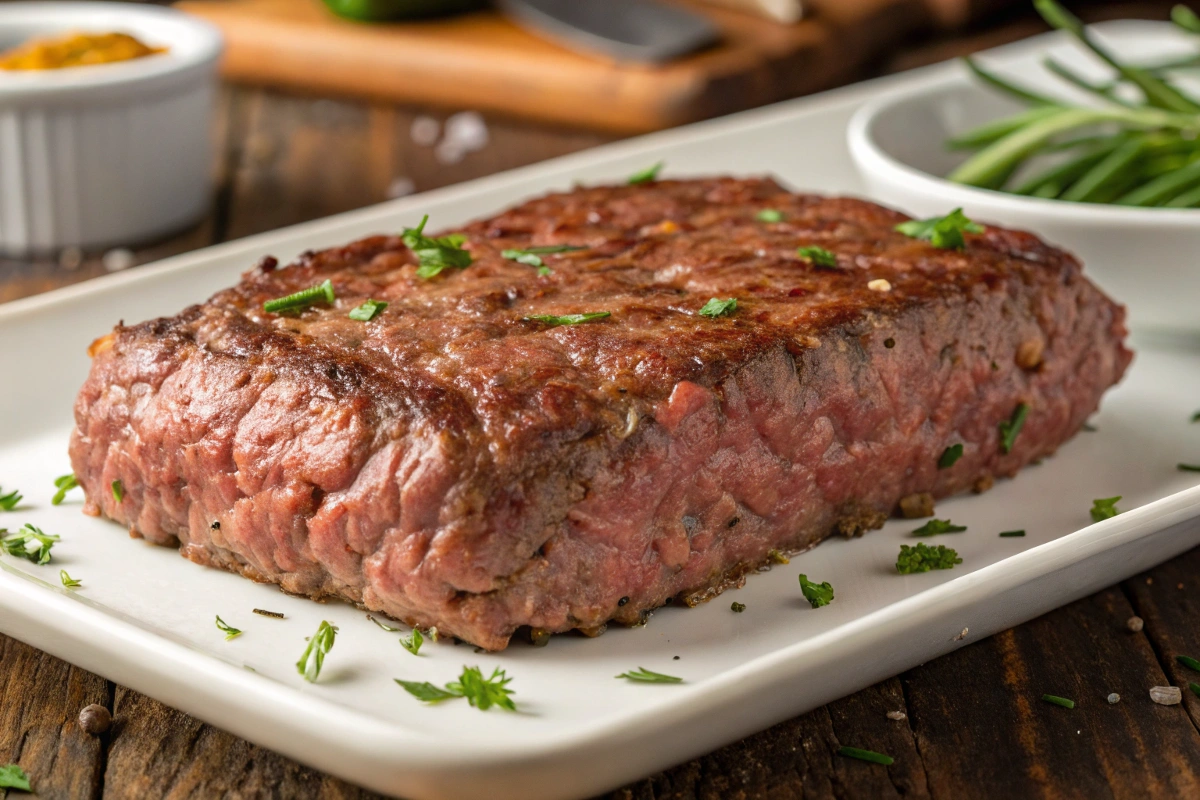
7. Environmental and Ethical Considerations
7.1. Sustainable Beef Production Practices
Sustainable beef production practices, such as rotational grazing and water conservation techniques, are becoming more prevalent. These methods not only reduce the environmental footprint but also promote healthier cattle, resulting in higher-quality meat. Supporting producers who adopt such practices contributes to long-term sustainability.
7.2. Ethical Sourcing Choices
Ethical sourcing is an important consideration for many consumers. Look for brands that prioritize animal welfare, ensuring humane treatment from farm to table. Certifications like “Certified Humane” or “Animal Welfare Approved” provide assurance of ethical practices, allowing you to enjoy lean ground beef with peace of mind.
8. Common Myths
8.1. Myth vs. Fact: Fat Content and Flavor
Myth: Lean ground beef lacks flavor.
Fact: With proper seasoning and cooking techniques, it can be just as flavorful as higher-fat options. Marinating the beef or incorporating spices like garlic, onion powder, and paprika can enhance its natural taste.
8.2. Myth vs. Fact: Health Concerns
Myth: All red meat is unhealthy.
Fact: When consumed in moderation and prepared healthfully, lGround meat can be part of a balanced diet. It provides essential nutrients like iron and vitamin B12, which are harder to obtain from other sources.
9. Cost-Effective Ways to Enjoy Lean Ground Beef
9.1. Budget-Friendly Meal Prep
Buying lean minced meat in bulk is a cost-effective strategy. Divide large packages into meal-sized portions and store them in the freezer for future use. Incorporating it into dishes with grains, beans, or vegetables stretches servings while adding variety and nutrients to your meals.
9.2. Smart Shopping Hacks
Keep an eye out for sales or discounted bulk packages, which often provide significant savings. Frozen lean ground beef is another economical option, as it typically has a longer shelf life and can be just as nutritious as fresh. Compare prices and look for loyalty discounts at your local grocery store to maximize value.
10. Lean Ground Beef in Popular Cuisines
10.1. American Favorites
Lean beef is a cornerstone of American comfort food. Classic dishes like meatloaf and Sloppy Joes are easily adapted with leaner options, retaining their hearty appeal while reducing fat content. Lean burgers, when grilled to perfection, offer a healthier alternative without sacrificing taste.
10.2. Global Inspirations
Around the world, lean ground beef takes center stage in diverse culinary traditions. Mediterranean koftas, seasoned with herbs and spices, deliver bold flavors in a lean package. In Asian cuisine, beef dumplings or stir-fried dishes showcase the versatility of lean ground beef, combining it with fresh vegetables and savory sauces for balanced, satisfying meals.
11. Expert Tips for Cooking Perfect Lean beef
11.1. Enhancing Flavor Without Excess Fat
Cooking lean ground beef to perfection requires thoughtful preparation to enhance its flavor and texture. Spices like paprika, garlic, and onion powder are essential for boosting its natural taste without adding extra fat. Additionally, incorporating broths or light sauces not only prevents dryness but also infuses the beef with rich, savory flavors. For instance, using a splash of beef stock during cooking can elevate the taste profile while keeping it moist.
Marinating Lean minced meat before cooking is another excellent strategy. Simple marinades with ingredients like soy sauce, olive oil, and lemon juice can tenderize the meat and add layers of flavor. This technique is particularly useful for grilling or stir-frying.
11.2. Avoiding Common Mistakes
One of the biggest pitfalls when cooking lean beef is overcooking, which can lead to dryness. To prevent this, cook the beef on medium heat and monitor it closely. Once the beef turns brown and the juices run clear, it’s ready to serve. Overcooking not only affects texture but also diminishes flavor.
Draining excess liquid during cooking is another crucial step. This helps concentrate the beef’s flavor and ensures a better consistency for dishes like tacos or casseroles. However, avoid rinsing the beef, as this can wash away essential nutrients and flavor compounds.
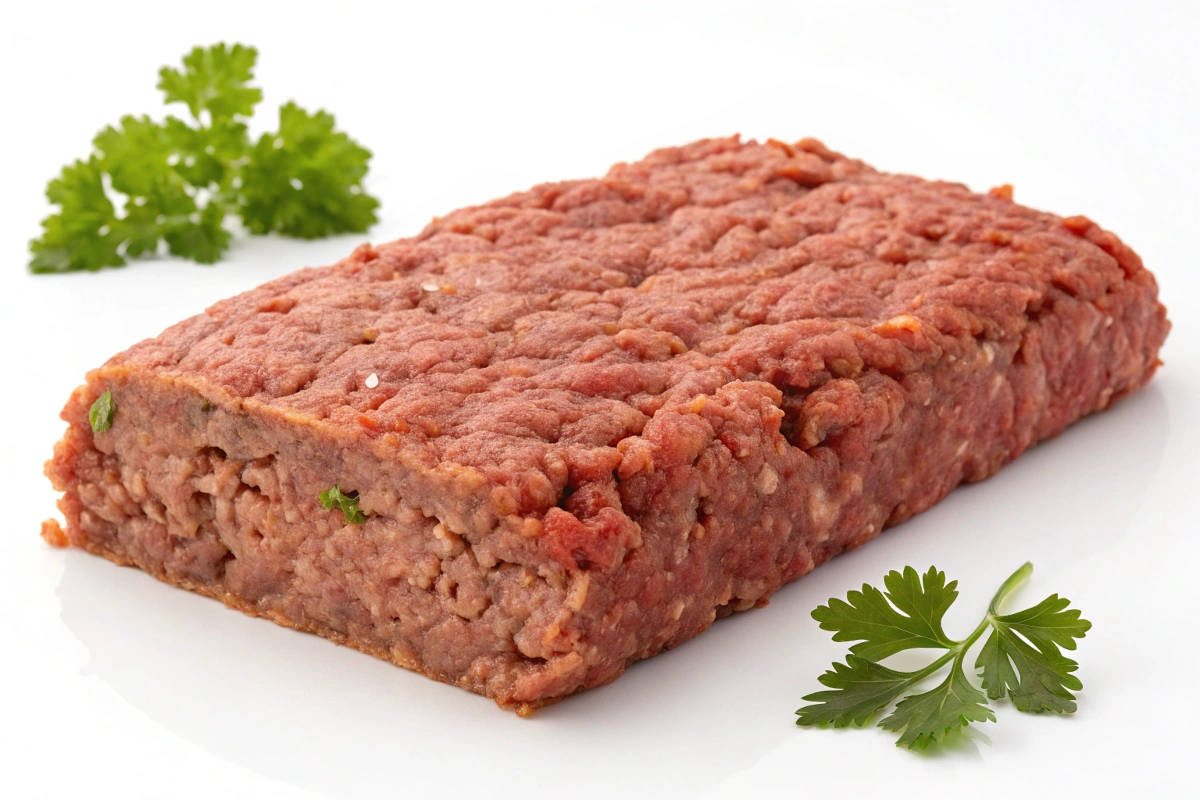
12. Comparing Lean Ground Beef with Alternatives
12.1. Lean Ground Beef vs. Ground Turkey
When comparing it and ground turkey, both offer unique benefits. Lean ground beef provides a richer, meatier flavor that enhances dishes like burgers and meatloaf. On the other hand, ground turkey is slightly lower in calories and fat, making it a lighter alternative for those focused on weight loss.
Nutritionally, both options are comparable in protein content, but lean beef has the edge in providing iron and vitamin B12, which are essential for energy production and overall health. Ground turkey, however, is often milder in flavor, allowing it to blend seamlessly with various seasonings and sauces.
12.2. Plant-Based Alternatives: Pros and Cons
Plant-based ground beef alternatives have gained popularity due to their cholesterol-free profile and environmental benefits. While these options are suitable for vegetarians and vegans, they often contain higher sodium levels and added ingredients to mimic the texture and flavor of meat.
In terms of nutrition, plant-based products can be fortified with vitamins and minerals, but they lack the natural iron and B12 found in it. For individuals looking to reduce their meat intake, these alternatives are a convenient option, but they may not fully replicate the nutrient density of traditional lean beef.
13. Addressing Dietary Restrictions and Preferences
13.1. Lean Ground Beef for Keto and Paleo Diets
Lean minced meat is a perfect fit for keto and paleo diets, as it’s naturally high in protein and free of carbohydrates. These attributes align with the principles of both diets, which emphasize whole, nutrient-dense foods. Incorporate it into meals like lettuce wraps, zucchini noodles, or cauliflower rice bowls for a satisfying, low-carb experience.
Its versatility allows for endless customization, making it a go-to ingredient for those adhering to these dietary lifestyles. Add healthy fats like avocado or olive oil to further complement keto requirements.
13.2. Gluten-Free and Dairy-Free Options
Plain lean ground beef is inherently gluten-free and dairy-free, making it a safe choice for individuals with these dietary restrictions. When preparing meals, ensure that seasonings, sauces, and accompaniments are also free of gluten and dairy to maintain the integrity of the dish.
For example, use coconut aminos instead of soy sauce and almond-based cream alternatives for sauces. These substitutions retain flavor while keeping meals allergen-friendly and enjoyable.
14. Lean Ground Beef and Fitness Goals
14.1. Pre-Workout Meals
Low-fat beef is an excellent component of pre-workout meals, providing sustained energy for physical activity. Combine it with complex carbohydrates like brown rice, quinoa, or whole-grain pasta to create balanced dishes that fuel workouts. The protein in lean ground beef helps stabilize blood sugar levels, preventing energy crashes during exercise.
For added convenience, prepare pre-workout meals in advance, such as beef-stuffed sweet potatoes or lean beef stir-fry with vegetables. These options ensure you’re fueling your body effectively before hitting the gym.
14.2. Post-Workout Recovery
After intense workouts, lean ground beef supports muscle recovery and glycogen replenishment. Pair it with nutrient-dense sides like roasted sweet potatoes or a quinoa salad to provide a balanced mix of protein, carbohydrates, and fiber.
The amino acids in lean ground beef play a crucial role in repairing muscle tissue and reducing soreness. Its inclusion in post-workout meals not only accelerates recovery but also contributes to overall fitness progress. For a quick recovery snack, consider lean beef lettuce wraps or beef and vegetable bowls
15. Frequently Asked Questions (FAQs)
15.1. How do I know if my ground beef is lean?
Check the packaging for the lean-to-fat ratio, such as 93/7 or 96/4, which indicates the percentage of lean meat to fat.
15.2. Can I use it for burgers?
Yes! Adding moisture-rich ingredients like onions, breadcrumbs, or egg can make low-fat beef patties juicier.
15.3. What’s the best way to store leftover ground beef?
Refrigerate leftover ground beef in an airtight container and consume it within 2-3 days to ensure freshness and safety.
15.4. Is lean ground beef suitable for kids?
Absolutely. It is an excellent source of protein, iron, and other nutrients essential for children’s growth and development.
15.5. Does it taste different?
It has a slightly less fatty texture but retains its meaty flavor when cooked with proper seasoning and techniques.
15.6. How can I make lean ground beef juicier?
Incorporate marinades, broths, or mix in moisture-rich vegetables like zucchini or mushrooms to enhance juiciness.
Lean ground beef stands out as a nutritious and versatile ingredient, offering a perfect balance of rich flavor and health benefits. From its high protein content to its essential vitamins and minerals, it’s a smart choice for supporting fitness goals, weight management, and family-friendly meals. With proper cooking techniques and thoughtful recipes, ground beef can easily become a star ingredient in your kitchen.
Ready to elevate your meals with ground beef? Explore new recipes, embrace creative cooking methods, and make informed choices when selecting and storing this wholesome ingredient. Whether you’re a fitness enthusiast, a busy parent, or a food lover, ground beef is your key to delicious, nutrient-packed meals. Start experimenting today and savor the difference!

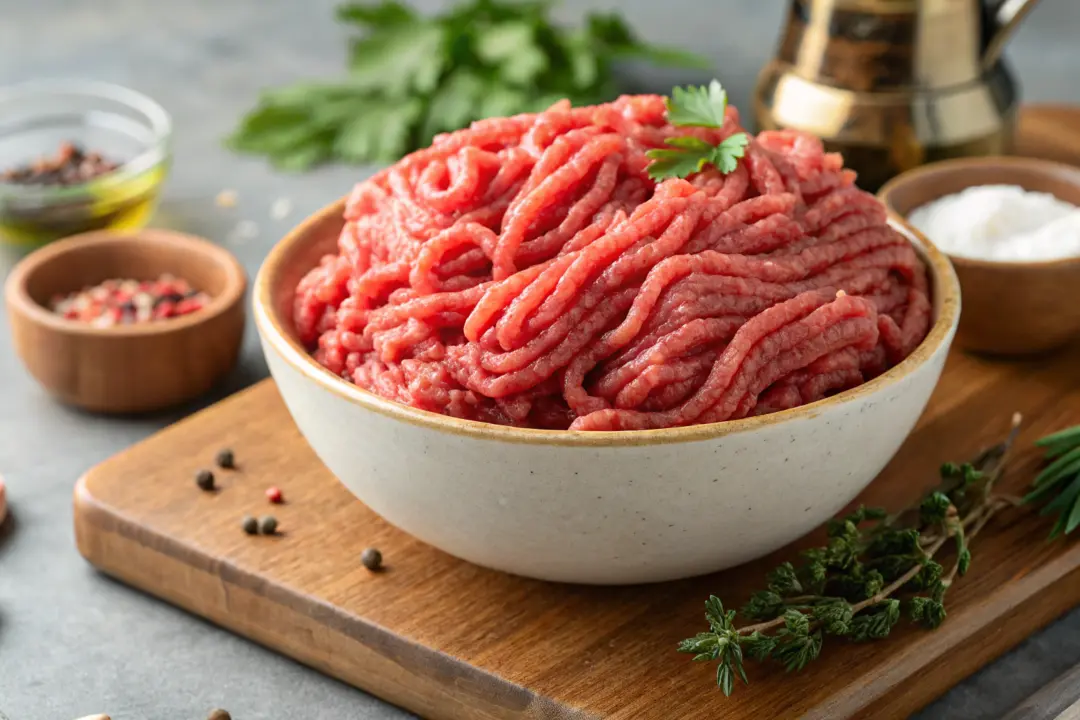
5 thoughts on “Lean Ground Beef: Your Go-To Ingredient for Healthy, Delicious Meals”